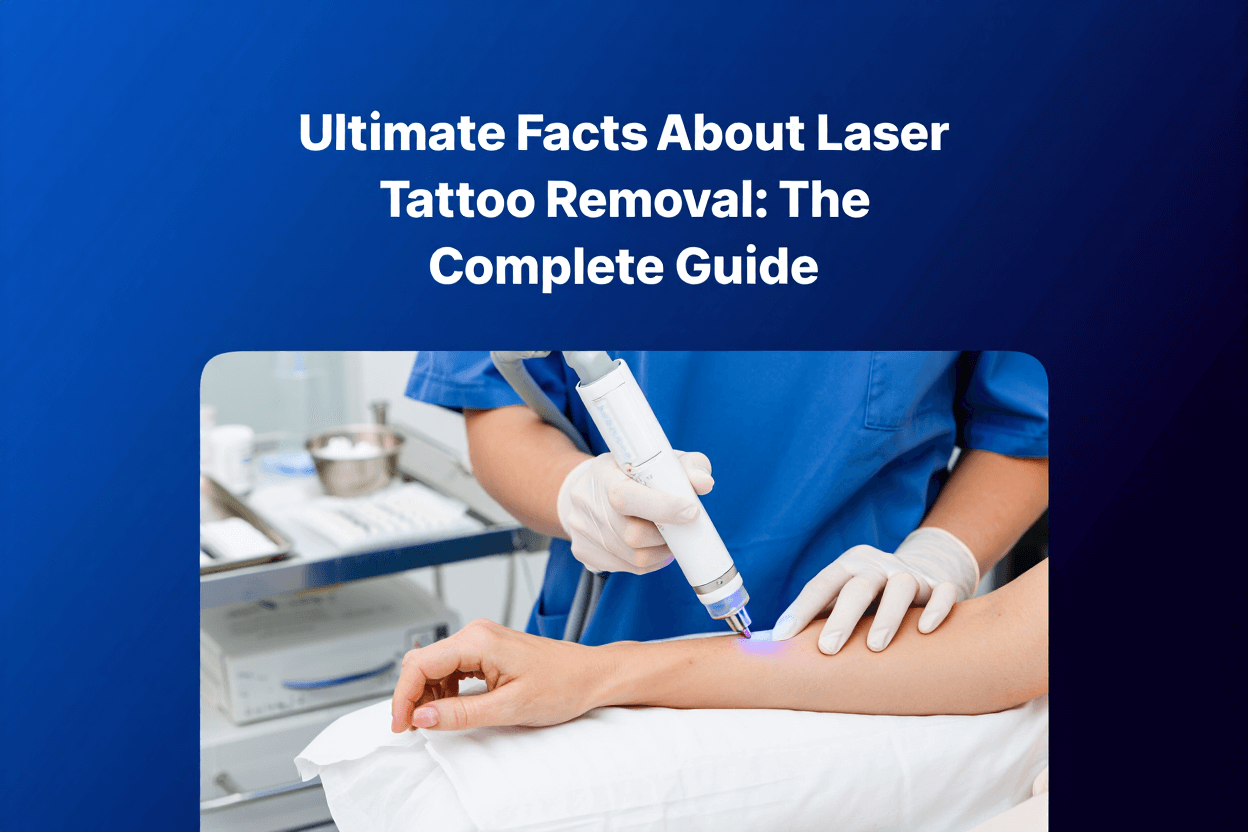
Tattoos are powerful forms of self-expression, representing memories, beliefs, milestones, or simply art that resonates with us. But as time passes, our tastes, lifestyles, or personal circumstances can change, and sometimes, the ink that once felt perfect no longer aligns with who we are. While full tattoo removal is an option, it’s not always necessary. This is where partial tattoo removal comes in — a modern, flexible solution for those who want to modify, refresh, or redesign their ink without completely erasing it.
In this article, we’ll explore what partial tattoo removal is, why it’s becoming a popular trend, how the process works, its benefits, and what to expect if you’re considering this approach to your body art.
What is Partial Tattoo Removal?
Partial tattoo removal is a specialized tattoo removal process designed to target only specific areas of a tattoo rather than eliminating the entire piece. Instead of completely erasing the artwork, skilled practitioners use advanced laser technology to fade or remove select portions.
For example:
- You may want to remove just a name from a tattoo while keeping the rest of the design.
- You may wish to lighten a portion of an old tattoo to make space for a new design.
- You might simply want to clean up edges, lettering, or shading to improve the overall appearance.
This approach gives you control and flexibility over your ink, making it a personalized alternative to total tattoo removal.
Why Choose Partial Tattoo Removal?
1. Redesign and Cover-Up Potential
Partial tattoo removal is often used as preparation for a cover-up tattoo. Instead of trying to force a new design over dark ink, fading specific areas creates a better “canvas” for tattoo artists. This ensures that the new tattoo looks cleaner, sharper, and more aligned with your vision.
2. Personalization Without Erasure
Some tattoos may still hold personal meaning, even if parts of them no longer fit your style. Partial removal allows you to keep what you love while altering or removing what you don’t.
3. Less Pain and Cost
Since only part of the tattoo is being removed, the process is often less painful, less time-consuming, and more affordable compared to full removal.
4. Updated Aesthetic
Trends in tattoo styles evolve. What looked fashionable years ago may feel outdated today. By using partial tattoo removal, you can update your ink without losing the sentimental value behind it.
How Does Partial Tattoo Removal Work?
The most common method for partial tattoo removal is laser technology. Here’s how it typically works:
- Consultation – A professional evaluates your tattoo and discusses which sections you want removed or lightened. This stage is crucial for creating a personalized plan.
- Laser Treatment – A laser emits intense pulses of light that break down the ink particles in the targeted area. These particles are then gradually absorbed and flushed out by the body’s immune system.
- Multiple Sessions – Depending on the size, ink color, depth, and age of the tattoo, several sessions may be required. However, since only a portion of the tattoo is treated, the process may be quicker compared to complete removal.
- Healing and Aftercare – Like any tattoo removal, proper aftercare is essential. This includes avoiding sun exposure, keeping the skin clean, and following professional guidance to ensure optimal results.
Benefits of Partial Tattoo Removal
Choosing partial removal over complete removal offers several benefits:
- Preserves What You Value – Keep meaningful parts of your tattoo while eliminating unwanted elements.
- Prepares Skin for New Ink – Creates a clean foundation for cover-ups.
- Faster Process – Since smaller areas are treated, you may need fewer sessions.
- Lower Cost – Reduced time and resources mean lower overall costs.
- Less Invasive – Less trauma to the skin compared to full removal.
Popular Uses of Partial Tattoo Removal
1. Removing Names or Words
A common reason for partial removal is erasing a name (such as an ex-partner’s) while keeping the rest of the artwork intact.
2. Adjusting Lettering or Dates
Fading specific text like dates, quotes, or numbers allows for updates without redesigning the entire tattoo.
3. Improving Old Tattoos
Tattoos from the past may have blurry lines or faded ink. Partial removal can clean up these areas before a touch-up session.
4. Creating Space for New Designs
When planning a cover-up tattoo, removing darker sections allows more flexibility for the tattoo artist.
Is Partial Tattoo Removal Painful?
The discomfort of partial tattoo removal is often compared to the feeling of having a rubber band snapped against the skin. However, because only a portion of the tattoo is being treated, many clients find it more tolerable than full removal. Topical numbing creams or cooling systems are often used to make the process more comfortable.
How Many Sessions Are Needed?
The number of sessions varies depending on:
- The size of the targeted area.
- Ink colors (black and dark inks typically respond better than bright or light colors).
- Depth of the ink.
- Skin type and healing response.
On average, partial tattoo removal may take 2 to 6 sessions, but since the area is smaller, results are often visible more quickly compared to complete tattoo removal.
Aftercare Tips for Partial Tattoo Removal
Aftercare is vital to ensure proper healing and prevent complications. Here are some key tips:
- Keep the area clean and dry for the first 24 hours.
- Avoid scratching or picking scabs or blisters that may form.
- Apply healing ointments as recommended by your specialist.
- Stay out of the sun or use high-SPF sunscreen to protect treated skin.
- Follow professional instructions carefully to avoid scarring or pigmentation changes.
Cost of Partial Tattoo Removal
The cost of partial tattoo removal depends on factors like:
- Size of the area being treated.
- Number of sessions required.
- Geographic location and clinic expertise.
On average, partial removal is significantly more affordable than full removal because it targets smaller areas. Prices may range from $100 to $500 per session, but it’s always best to consult directly with a certified provider for an accurate estimate.
Choosing the Right Professional
Selecting the right practitioner for partial tattoo removal is essential for safety and results. Look for:
- Licensed and certified laser specialists.
- Clinics with advanced technology like PicoWay or Q-switched lasers.
- Positive reviews and before-and-after photos.
- Transparent consultations and pricing.
Avoid at-home or unlicensed treatments, as these can lead to scarring, burns, or unsatisfactory results.
The Rising Popularity of Partial Tattoo Removal
In today’s world, tattoo culture is more mainstream than ever. With that growth comes an increased demand for tattoo modification rather than complete removal. People want flexibility — the ability to refresh their ink without losing the essence of the original tattoo.
This trend reflects a broader shift in how society views tattoos. No longer seen as permanent mistakes, tattoos are evolving works of art that can be adjusted, redesigned, and modernized. Partial tattoo removal fits perfectly into this new mindset, offering both freedom and creativity.
Conclusion
Tattoos are deeply personal, but our lives, tastes, and identities evolve. If you find yourself wishing to update your ink without erasing it completely, partial tattoo removal provides the perfect balance between preservation and transformation.
Whether you’re preparing for a cover-up, removing unwanted names or text, or simply refreshing an old design, partial removal is a smart, cost-effective, and modern solution. With the right professional and a clear vision, you can keep the parts of your tattoo that matter most while making space for new expression.
In the end, tattoos don’t have to be permanent regrets — they can remain living art that grows with you. And partial tattoo removal ensures that your skin continues to tell your story in the way you want it to be told.




